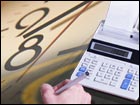Don't blow off your IRA
Tax rules make it easy to be a procrastinator, but it will cost you big money.
March 1, 2002: 6:47 p.m. ET
By Staff Writer Martine Costello
|
 NEW YORK (CNN/Money) - It's easy to procrastinate when it comes to retirement planning. And when it comes to your IRA, Uncle Sam actually encourages it.
NEW YORK (CNN/Money) - It's easy to procrastinate when it comes to retirement planning. And when it comes to your IRA, Uncle Sam actually encourages it.
The IRS allows you to wait until April 15 to make IRA contributions for the previous year. So you can focus on baseball, tulip bulbs, or your kid's college applications, and pretty much ignore your IRA until April 14. Many people do.
But higher savings limits for IRAs that took effect in 2002 -- not to mention a stock market well off its highs -- make it even more attractive to contribute earlier this year.
The contribution limits increased this year to $3,000 from $2,000. The new laws also have a catch-up provision for the kings of all procrastinators -- the people who haven't done any retirement saving. If you're age 50 or older, you can save a total of $3,500 this year.
Still, not everybody might be rushing to pull out their checkbooks.
"Most people treat IRA contributions like they're paying a bill," said Ed Slott, a national expert on IRAs and editor of the newsletter IRA Investing. "They should think about it as paying themselves."
Here are three steps to get started.
1. Pick a flavor
First, you need to choose between a traditional and a Roth IRA. Both offer tax-deferred growth. But with a traditional IRA, you pay taxes when you withdraw. You pay no taxes when you take money out of a Roth.
Your income will determine whether you can deduct contributions from a traditional IRA, and whether you qualify for a Roth.
Which is best? The worst option is a traditional, non-deductible IRA. The choice between a deductible and a Roth is more complicated, but generally you're better off in a Roth if you expect to be in a higher tax bracket when you retire. (Click here for more on those rules.)
But even if you can't deduct the contributions, the tax-deferred savings of an IRA can be substantial, said Mark Groesbeck, a certified financial planner in Houston.
For example, consider these scenarios, Groesbeck said. Let's say you save $3,000 a year for 25 years earning 9 percent. In a traditional brokerage account, you'd end up with $190,155 after taxes. In a traditional IRA, you'd earn $253,531. But in a Roth, you'd make $276,972.
"It's another tool to maximize retirement savings," Groesbeck said.
2. Show me the money
A survey by the ICI found that only 25 percent of households with traditional IRAs made contributions in 2000. The only way to take advantage of an IRA is to dig into your wallet year in and year out and put away the maximum.
If you haven't made your contributions for last year yet, you could theoretically put away a maximum of $5,000. That's $2,000 for 2001, plus $3,000 for 2002. Add another $500 to that figure if you're 50 or older.
That's a big chunk of change for most people. If you can't quite swing the full amount, put away as much as you can and then set up an automatic monthly payment plan with your IRA holder. You can arrange it so the payments come automatically out of your check.
What you don't see, you won't miss. But once the money gets into your hot little hand, it's amazing how everyday expenses will eat it up.
Even a few months more in the market will make a big difference over time, Slott said. People don't realize the power of tax-deferred compound growth.
3. Pick a fund
Don't let indecision over where to put your money hold you up, either. An index fund is a good core holding until your account grows in size. From there, you can complete your asset allocation by adding mid-caps, small-caps, international stocks, and bonds.
An index fund like Vanguard 500 Index will give you broad exposure to the market as well as a rock-bottom expense ratio of 0.18 percent. The fund, which tracks the S&P 500, has a 10-year annualized return of nearly 13 percent, Morningstar said.
If you already have an IRA, now is a good time to check your asset allocation and see how your funds are doing. Don't worry if a fund has lost money in the past year -- almost everything has been in the red. See if it has a good long-term record over three-to-five years.
And check to see how your fund has performed compared with other funds in the category.� If your tech fund lost 15 percent, it might sound bad. But the average tech fund lost 35 percent. So if your fund beat the category average, then you shouldn't bail out.
If you also have a 401(k), try to make your IRA complement your company retirement plan. For example, if your 401(k) doesn't have any international funds, then use your IRA to complete your allocation. For example, Artisan International has earned an average of 11.3 percent in the past five years and has been at the top of its category, Morningstar said.
The latest fund data hasn't shown any blazing rush by investors to make their IRA contributions this year. While it might be more fun to think about baseball or flower gardens than scribbling out a fat check to your IRA provider, you'll pay for it years from now. 
* Disclaimer
Click here to send mail to Martine Costello
|
| SPECIAL: |
|
|
|
|
|

|

